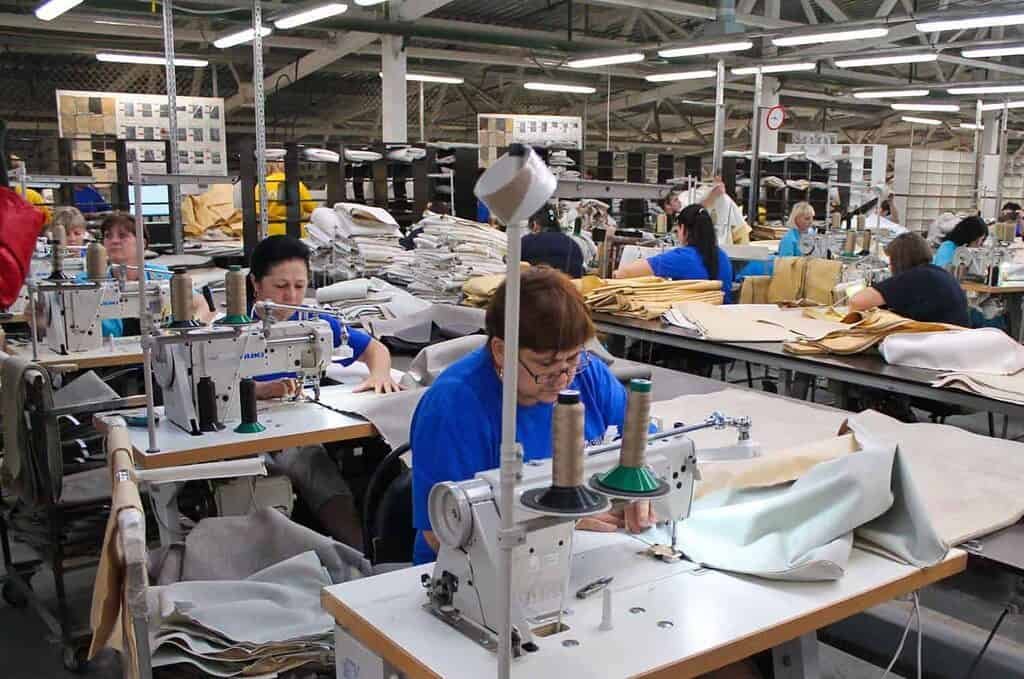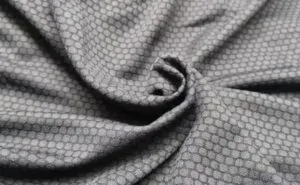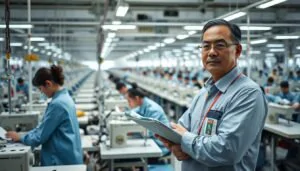With the development of our society, technology has greatly changed the way we live. It has great impacts on almost every industry we can think of. Apparel manufacturing industry has also benefited from technology advancement. This article will introduce the impact of technology on apparel manufacturing.

What technologies are related to apparel manufacturing?
As we all know, there are many technologies that have great impact on apparel manufacturing. Below are the introductions of the three technologies relating to apparel manufacturing.
1. Artificial Intelligence
In the apparel manufacturing industry, we carry out apparel virtual 3D design, 3D fitting, 3D runway and simulation of apparel color, style, fabric, etc. The main purpose is to allow the designer to make modifications and adjustments to the apparel work through real effect viewing, and then design a good apparel work. As the accuracy of machine vision technology and image recognition technology in AI technology has been far greater than human vision and recognition ability, the application of AI technology to the clothing manufacturing industry can greatly improve the presentation of clothing.
2. Automation
Automation plays an important role in the manufacturing process of apparel. Machines are able to do repetitive tasks to reduce error rates and allow workers to focus on more productive areas of production. Machines can produce thousands of garments per day, thus reducing the time required to manufacture clothes. In addition to this, the quality of the garments produced by the machines is consistent and the size of the garment produced by machines is accurate.
3. 3D Printing
The 3D printing technology has dramatically changed the apparel manufacturing industry. The specific process is to use 3D printing technology to print out the striped appearance, then add hand embroidery, sequins embellishment, and finally weaving connection to become a complete set of clothing. Many fashion brands have adopted 3D printing to create their garments. For instance, Karl Lagerfeld has used 3D printing to create a dress that he put into the Chanel couture collection.
How technology changes apparel manufacturing?
For the apparel manufacturing industry, the development of science and technology can bring about changes in many aspects. First of all, the development of science and technology can improve production efficiency and reduce costs. Through digital technology, we can realize the rapid production of clothing, shorten the production cycle, greatly improve production efficiency. Secondly, the development of science and technology can realize the automated production of clothing, reduce labor costs and increase profits. Thirdly, the development of technology also allows us to monitor the production process in real time, thus improve the quality of clothing and enhance the brand reputation. Last but not least, the development of science and technology can also reduce unnecessary waste in the process of garment production, and avoid the waste of resources, thus realizing “green production”.
What are the disadvantages about technologies relating to apparel manufacturing?
As we often say, technology is a double-edged sword. Aa we enjoy the benefits technologies bring, we should also be aware of the problems they cause. Below are several disadvantages about technologies relating to apparel manufacturing.
1. Unemployment
With the development of automation technology, more and more apparel manufacturing jobs are being replaced by machines, resulting in a large number of workers losing their jobs. Here is a real case. Zhang Mingguang originally worked in a apparel manufacturing factory in Jiangsu province, where his superb hand tailoring skills had made him highly sought after. However, with the introduction of new technology, the workers there was gradually replaced by machines. In May of this year, after the enterprise fully implemented automation, Zhang had to leave this factory, where he had been working for over 20 years.
2. Waste of resources
The fast-fashion trend has led to faster clothing updates and the need for clothing manufacturers to produce more clothes, but that also means more clothes are being thrown in the trash. In the United States, an average garment is worn only seven times before it is discarded. Let’s see some statistics, it takes up to 20,000 liters of water to produce one kilogram of cotton. As many as eight thousand chemicals may be used to make a single garment. Therefore, the development of technology brings the problem of waste of resources.
3. Environmental pollution
The development of technology also could bring about environmental pollution problems. The first type of pollution is dye pollution. Globally, 17% to 20% of industrial wastewater comes from the garment manufacturing industry dyeing and finishing process. There are 20 tons of toxic wastewater discharged by garment manufacturing factories in a year. The waste water is filled with a variety of toxic substances, including copper, arsenic, lead, cadmium, mercury, etc. The second type is is air pollution. The annual carbon emissions of the garment manufacturing industry account for 10% of global emissions. Factories will release nitrous oxide in the production of synthetic fibers, which is 300 times more toxic than carbon dioxide, resulting in serious air pollution. The third type is is soil pollution. We throw away an average of 30kg of clothing each year, and only 15% is recycled or donated. The rest is sent to refuse landfill to be buried or incinerated. Today, 72% of all clothing is made from polyester fibers, which are difficult for nature to biodegrade because of the plastic content of the material, and can take at least 200 years to decompose.
To sum up, various kinds of technologies have changed apparel manufacturing greatly. However, every coin has two sides. Technology advancement can also bring us some problems. Only if we use these technologies properly can we enjoy the fruits of technology advancement. If you have further questions or ideas about the impact of technology on apparel manufacturing, you are welcome to leave a comment on our website.







